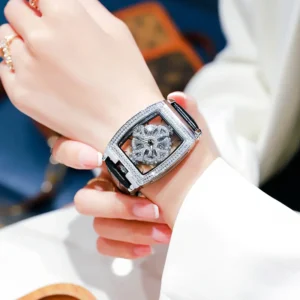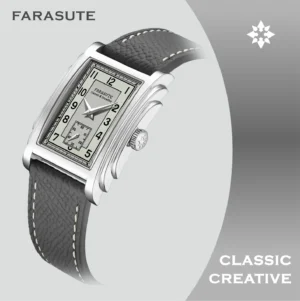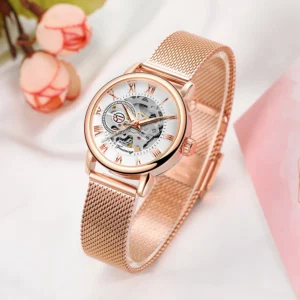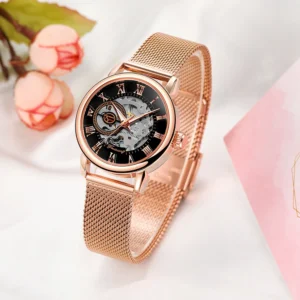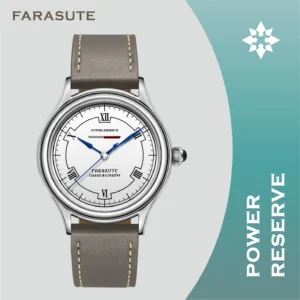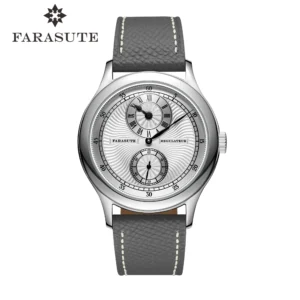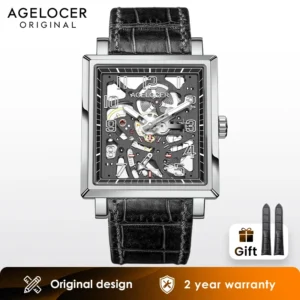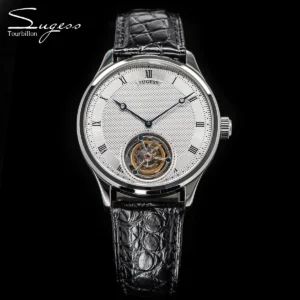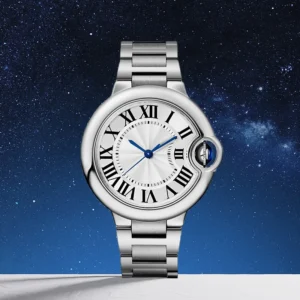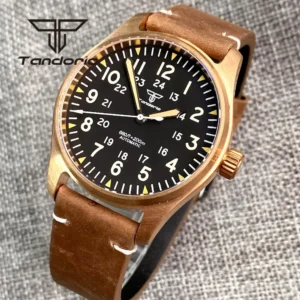Manual Wind Watches
Embrace the timeless ritual of daily winding. Manual wind watches offer a direct connection to watchmaking heritage, often featuring slimmer designs and reliable, battery-free mechanical movements.
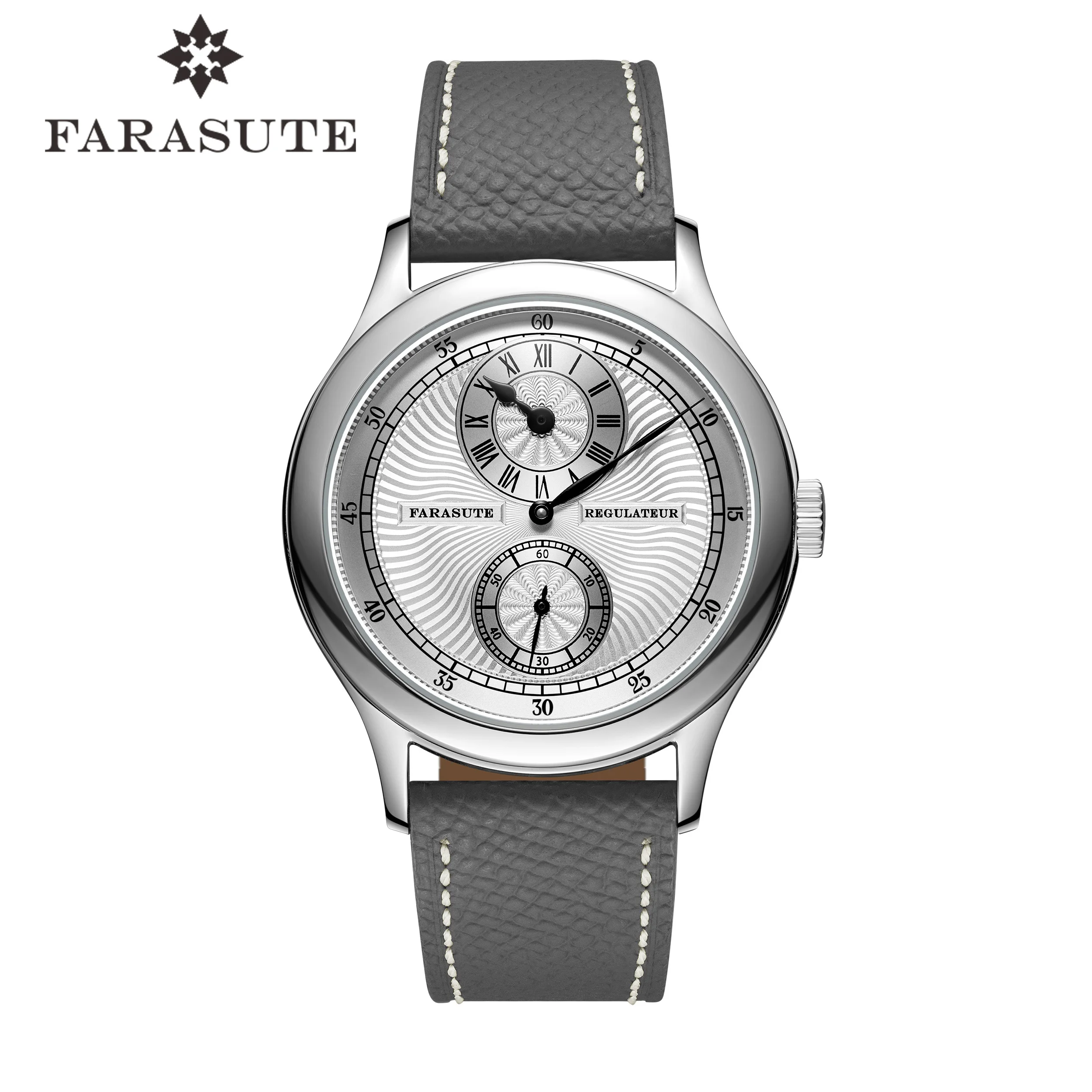
Showing 1–12 of 23 results
- $104.12 Select options This product has multiple variants. The options may be chosen on the product page
Classic Manual Wind Watches, Manual Wind Dress Watches, Square & Rectangular Automatic Watches
$884.95 Select options This product has multiple variants. The options may be chosen on the product pageAutomatic Skeleton Watches, Manual Wind Dress Watches, Mechanical Skeleton Watches
$80.72 Select options This product has multiple variants. The options may be chosen on the product pageManual Wind Dress Watches, Mechanical Skeleton Watches
$126.44 Select options This product has multiple variants. The options may be chosen on the product pageAutomatic Skeleton Watches, Manual Wind Dress Watches, Mechanical Skeleton Watches
$117.92 Select options This product has multiple variants. The options may be chosen on the product pageClassic Manual Wind Watches, Manual Wind Dress Watches
$1,222.13 Select options This product has multiple variants. The options may be chosen on the product pageClassic Manual Wind Watches, Manual Wind Dress Watches
$761.16 Select options This product has multiple variants. The options may be chosen on the product pageManual Wind Dress Watches, Mechanical Skeleton Watches, Square & Rectangular Automatic Watches
$671.02 Select options This product has multiple variants. The options may be chosen on the product pageClassic Manual Wind Watches, Mechanical Skeleton Watches
$1,349.73 Select options This product has multiple variants. The options may be chosen on the product pageAutomatic Skeleton Watches, Classic Manual Wind Watches, Manual Wind Dress Watches, Mechanical Skeleton Watches
$1,944.80 Select options This product has multiple variants. The options may be chosen on the product pageAutomatic Skeleton Watches, Manual Wind Dress Watches, Mechanical Skeleton Watches
Price range: $265.44 through $285.64 Select options This product has multiple variants. The options may be chosen on the product pageChronograph Pilot Watches, Classic Manual Wind Watches, Classic Pilot Watches
Price range: $1,690.75 through $1,756.03 Select options This product has multiple variants. The options may be chosen on the product page
Showing 1–12 of 23 results
Understanding Manual Wind Watches
Manual wind watches represent the purest form of mechanical watchmaking, requiring direct human interaction to function. Unlike their automatic counterparts, these timepieces need the wearer to physically wind the crown regularly, creating a unique connection between person and watch.
At their heart, manual wind watches operate on elegantly simple principles. When you turn the crown, you directly tighten a mainspring—essentially a thin strip of metal coiled inside a barrel. As this spring gradually uncoils, it releases stored energy that flows through a gear train, powering the watch’s hands and any complications. This energy is carefully regulated by an escapement, which breaks the power into precise, consistent increments.
The key differences between manual wind watches and other movement types include:
- Manual vs. Automatic: While manual watches need daily hand-winding, automatic watches self-wind through wrist movement
- Manual vs. Quartz: Manual watches use mechanical energy from the mainspring, while quartz watches rely on battery power
- Power Reserve: Most manual movements offer 40-80 hours of power between windings
This hands-on relationship with timekeeping creates an experience fundamentally different from the “set and forget” nature of other watch types.
The Winding Process
Properly winding a manual watch is both simple and satisfying:
- With the watch off your wrist, gently pull the crown to its normal position (not extended as for time setting)
- Rotate the crown clockwise (for most watches) approximately 15-20 complete turns
- Feel for increasing resistance as the mainspring tightens
- Stop when you feel significant resistance (modern watches have protection against overwinding)
The sensation of winding is distinctive—starting with minimal resistance and gradually becoming firmer as the mainspring stores energy. This tactile experience creates a moment of mindfulness each day, ideally performed at a consistent time to ensure optimal timekeeping.
The Allure of Manual Winding
The appeal of manual wind watches extends far beyond their technical function, creating a unique relationship between timepiece and owner that automatic or quartz watches simply cannot match.
The Daily Ritual
The act of winding becomes a meaningful daily ritual—a moment to pause, appreciate craftsmanship, and physically connect with your timepiece. This interaction creates a deeper bond than with watches that require minimal attention. Many collectors describe this daily ceremony as meditative, grounding, and deeply satisfying.
Aesthetic Advantages
Manual wind movements lack the automatic winding mechanism, resulting in watches that are typically 1-2mm thinner than their automatic equivalents. This allows for more elegant profiles, particularly appealing in dress watches where sleekness is prized. The dial designs often appear cleaner too, with fewer components to accommodate beneath.
Visible Craftsmanship
Many manual wind watches feature exhibition casebacks that showcase the beautifully decorated movements. Without a rotor blocking the view (as in automatic watches), you can fully appreciate the intricate gears, levers, and springs that bring your timepiece to life. These visible mechanics tell a story of traditional craftsmanship dating back centuries.
Important Considerations Before Purchase
While manual wind watches offer unique joys, they also require specific commitments worth considering:
- Daily Attention: Unlike automatics or quartz watches, manual wind timepieces need regular winding—typically once every 1-2 days depending on power reserve
- Power Reserve Variations: Entry-level movements might offer only 40 hours of power, while premium calibers can run up to 80 hours or more between windings
- Accuracy Expectations: Mechanical watches typically run within +/- 5-15 seconds per day, less precise than quartz but reasonable for mechanical timekeeping
- Travel Considerations: For extended trips, plan for your watch potentially stopping if unworn beyond its power reserve
Modern manual wind watches include protection mechanisms that prevent damage from overwinding, making them more user-friendly than vintage pieces that required careful attention to winding limits.
Caring for Your Manual Wind Watch
Proper care enhances both the performance and longevity of your manual wind timepiece:
- Wind your watch at approximately the same time each day, establishing a consistent routine
- Use smooth, steady motions when turning the crown—jerky movements can potentially stress components
- When setting the time, avoid changing the date between 9 PM and 3 AM when date mechanisms are engaged
- Schedule professional service every 3-5 years to ensure optimal performance
When storing unworn watches, wind them fully before placing them away. For extended storage, consider a watch winder designed specifically for manual timepieces, which can help maintain lubrication distribution within the movement.
Manual Wind vs. Automatic vs. Quartz
| Feature | Manual Wind | Automatic | Quartz |
|---|---|---|---|
| User Interaction | Daily winding required | Self-winds with movement | Battery change every 1-3 years |
| Case Thickness | Typically thinner (7-9mm) | Often thicker (9-13mm) | Can be very thin (5-8mm) |
| Accuracy | +/- 5-15 seconds/day | +/- 5-15 seconds/day | +/- 15 seconds/month |
| Maintenance | Service every 3-5 years | Service every 3-5 years | Battery change, minimal service |
| Longevity | Generations with proper care | Generations with proper care | Electronic components may fail |
| Connection | High owner involvement | Moderate involvement | Minimal involvement |
Each movement type offers distinct advantages. Manual wind watches excel in providing a traditional experience, elegant thinness, and unobstructed view of the movement. They represent the purest expression of mechanical watchmaking, though they require more daily attention than other types.
Exploring Our Collection
At Sharp Aspect, our manual wind watch selection celebrates the artistry of traditional watchmaking while offering options for various preferences and occasions:
By Style:
– Elegant dress watches with minimalist dials and slender profiles
– Field watches combining ruggedness with the charm of manual winding
– Pilot watches featuring high legibility and vintage-inspired designs
By Price Range:
– Entry-level pieces offering quality mechanical movements at accessible price points
– Mid-range options with enhanced finishing and complications
– Premium models featuring exceptional movements and meticulous detailing
By Material:
– Stainless steel cases offering durability and classic appeal
– Precious metal options for those seeking luxury and distinction
– Various strap choices including fine leather, stainless steel bracelets, and textile options
Each timepiece in our collection undergoes rigorous evaluation to ensure it meets our standards for movement quality, case construction, and overall finishing.
Related Styles and Options
If you appreciate the charm of manual wind watches, you might also enjoy exploring these related categories:
- Classic manual wind watches showcase traditional designs that have stood the test of time
- Manual wind dress watches offer elegant options perfect for formal occasions
- Skeleton watches provide fascinating views of mechanical movements in action
- Mechanical skeleton watches combine traditional movement architecture with contemporary openworked designs
- Open heart automatic watches reveal glimpses of the beating movement while offering the convenience of self-winding
Each category represents a different expression of horological art, sharing the mechanical ingenuity that makes fine watches so captivating.

